Discovery Health Medical Scheme's 'youngest' and 'oldest' centenarian members (110 people in 2025) are remarkably healthy!

As of May 2025, Discovery Health Medical Scheme had 110 centenarian members: 31 'oldest' centenarians, aged from 102 to 105, and 79 'youngest' centenarians, aged 100 or 101. It's remarkable how well they compare to much younger members when it comes to chronic disease levels, admission rates and other areas reviewed.
Authors
Discovery Health's Intelligence team members Sian-Ailin Da Silva (Statistician), Lizelle Steenkamp (Senior Healthcare Statistician) and Lara Wayburne (Chief Health Intelligence Actuary), with Amalia Theologides (Content Lead).
Quick overview
As of May 2025, Discovery Health Medical Scheme (DHMS) has 110 centenarian members: 79 aged 100-101 and 31 aged 102-105. These members are remarkably healthy, with chronic disease levels, hospital admission and claims rates comparable to much younger members.
The Scheme's oldest centenarians average 1.9 chronic conditions, like members in their 50s, and only four (all female) of this group have developed new conditions since 2023. Hospital admission rates for this group from 2023 to 2025 (48%) are comparable with those of members in their 60s. The Scheme's younger centenarians show similar trends, with males healthier than females. Chronic condition rates are generally low in this group (affecting more females than males where they do occur). The prevalence of depression (1.8% vs. DHMS average of 3.5%) and cancer is notably low (only 15% of the group have had - all surviving - cancer).
Monthly claims to DHMS are modest - older centenarians claim less than younger ones, and both groups claim less than members in their mid-60s. Many centenarians are long-time DHMS members, with some actively engaged in Vitality in recent years. The number of centenarians in DHMS has steadily grown over time, and with nearly 8,000 members over 90 at May 2025, this trend is set to continue.
Living to 100 and beyond!
In September 2023, we published our first review of the Discovery Health Medical Scheme (DHMS) centenarian population (people aged 100 years or older). At the time, the Scheme had 90 centenarian members. In 2025, 31 members of this group remain with the Scheme, and are now our 'oldest' (aged from 102 to 105) centenarian members - 26 female and five male members.
This year, DHMS also has 79 'younger' centenarians, who are 100 or 101 years old. As of 22 May 2025, a few months shy of two years after our first analysis, DHMS therefore has a total of 110 centenarian members - 88 females and 22 males (maintaining a trend we first saw in 2023, when we noted that females made up more than 80% of our centenarian group).
How old are our 110 centenarians?
Our 79 youngest centenarians are aged as follows:
- 51 centenarians - 100 years old
- 28 centenarians - 101 years old
Our 31 oldest centenarian members are aged as follows (Figure 1):
- 12 centenarians - 102 years old
- 8 centenarians - 103 years old
- 7 centenarians - 104 years old
- 4 centenarians - 105 years old.
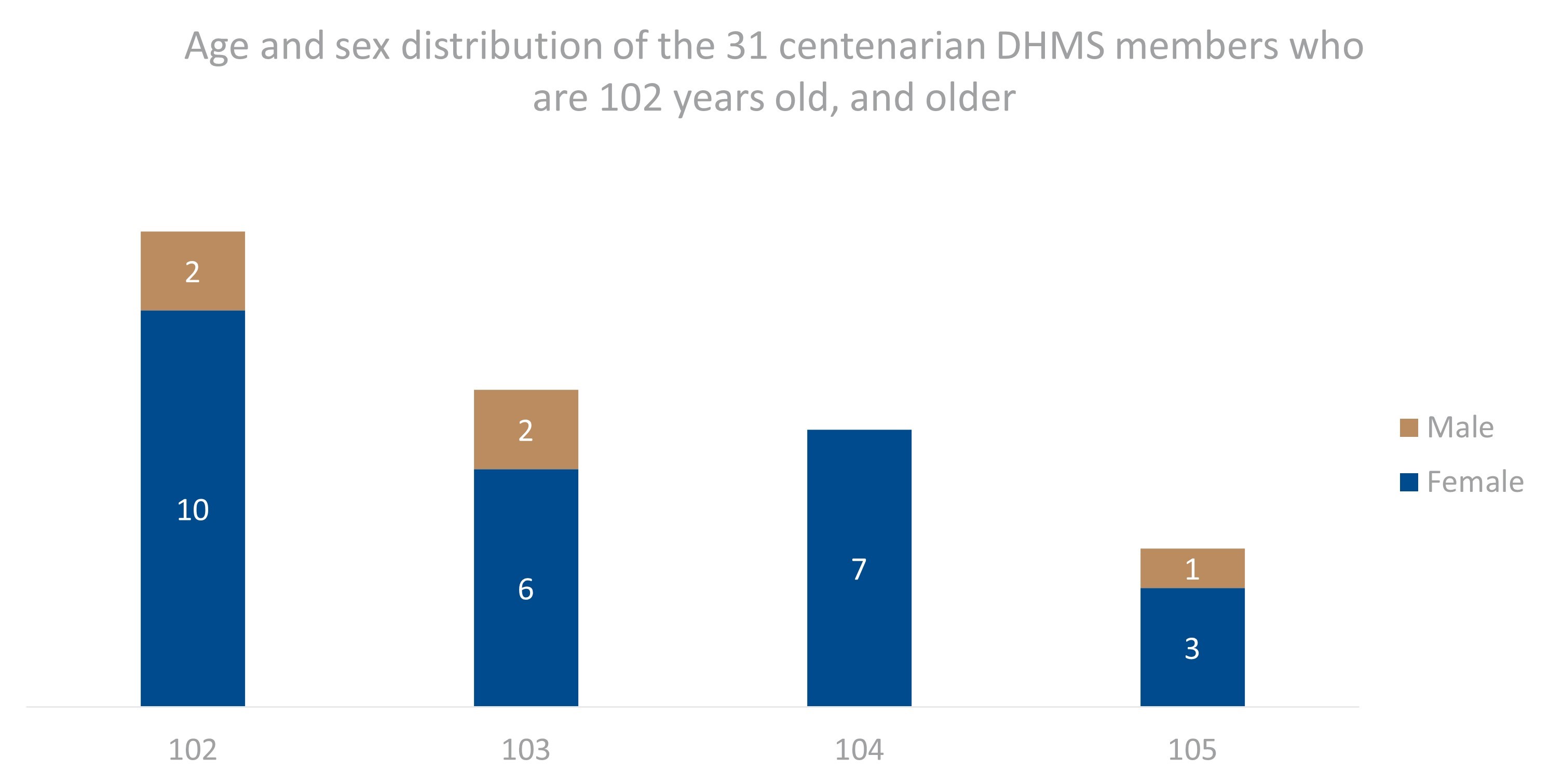
Figure 1. Age and sex distribution of the 31 centenarian DHMS members aged 102 to 105
Section A: What does our analysis reveal about Discovery Health Medical Scheme's 31 oldest centenarians (aged from 102 to 105)?
As people age, they tend to face an increased risk of chronic disease and a generally greater need for access to healthcare. This, in turn, increases the degree to which they claim from their medical scheme cover, making ageing scheme populations one significant driver of medical inflation, on a global scale.
Are our oldest centenarians an exception to the rule in this regard? It seems so:
When we first reported on our 90-member centenarian cohort in 2023, one of our most important findings was that, as far as chronic disease count was concerned, these members compared favourably with members about half their age. They had the average number of chronic conditions seen across all DHMS members who were decades younger (between 55 and 75 years old).
Centenarian male members were registered for an average of 2.00 chronic conditions compared with 2.504 for centenarian female members.
What is the chronic condition rate among the oldest centenarians in 2025?
In 2025, our 31 oldest centenarians had an average chronic condition count of 1.9 - once again, like that of decades younger (between 55 and 75 years old).
Further, in the two years since our first report, only four of the 31 centenarians - all female members - have registered for new chronic conditions.
- These chronic conditions include congestive heart failure, macular degeneration, ischemic heart disease, hypercholesterolaemia, hypothyroidism and glaucoma.
- One member of the group developed skin cancer over the past two years.
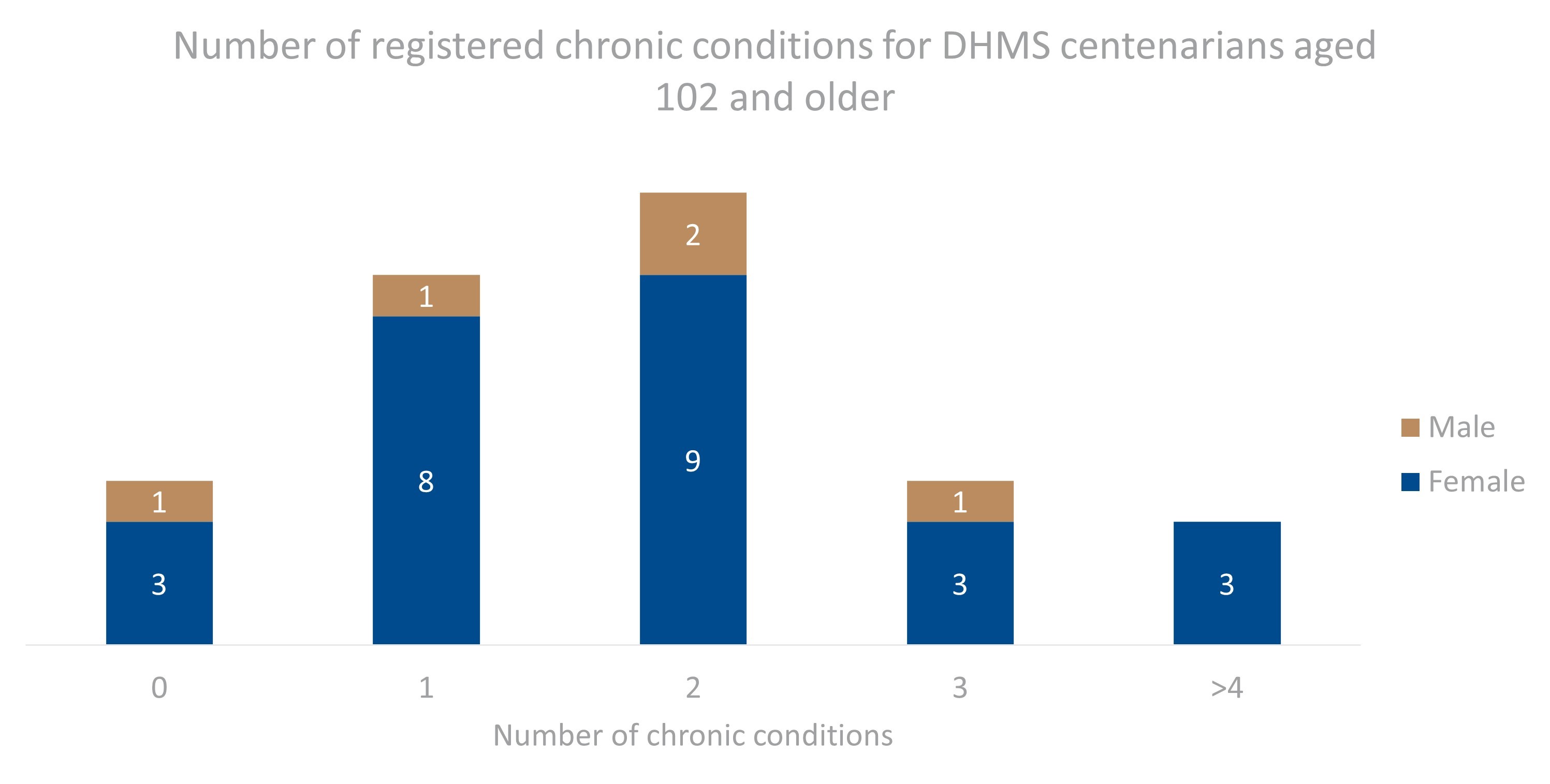
Figure 2. Distribution of chronic conditions for males and females among the oldest centenarian DHMS members, with chronic condition count
How often do our 31 oldest centenarians get admitted to hospital?
Since May 2023, only one third (10) of the 31 centenarians have been admitted to hospital with a total of 15 admissions across this group:
- 4 admissions for surgical procedures including:
- 2 for minor skin procedures
- 1 for an esophagogastric scope to treat infection
- 1 for hip alignment surgery.
- 11 Admissions for non-surgical reasons including:
- 2 for circulatory and electrolyte disorders
- 2 for heart failure and shock (most serious)
- 2 for gastroenteritis
- 1 for a cardiac catheterisation
- 1 for angina pectoris
- 1 for kidney and urinary tract infections
- 1 for musculoskeletal disorder
- 1 for a respiratory infection.
Overall, 15 admissions among 31 centenarians represent a 48% admission rate. This is comparable to the admission rate of members in their 60s (46%) and 18% lower than that of members in their 70s.
Section B: What does our analysis reveal about our 79 'youngest' centenarians (aged 100 or 101)
Analysis of the data relating to our 79 members aged 100 or 101 shows:
- This group of people is healthier than members who are decades younger than they are
- There are more female centenarians (78%: 62 out of 79) than males, but male centenarians are healthier than females.
On 22 May 2025, our youngest centenarian male members (17 members) were registered for an average of 1.8 chronic conditions compared with 2.8 for centenarian female members (62 members). These chronic disease rates are equivalent to those of Scheme members decades younger (between 55 and 75 years old).
Figure 4 shows the top 15 chronic conditions evident in this group of centenarians. The most common chronic condition in both male and female centenarian members is essential hypertension (Figure 4), affecting 66% of males and 53% of females.
Two chronic conditions are more common in male centenarians than in females:
- Asthma (in 12% of males and 8% of females)
- Cardiomyopathy (in 6% of males and 2% of females).
Five chronic conditions only occur in females but not in males:
- Hypothyroidism (18%)
- Osteoporosis (11%)
- Respiratory failure (5%)
- Depression (3%)
- Chronic obstructive pulmonary disease (3%).
Taking males and females into account, the prevalence of depression is very low in our centenarian members. Across both sexes, only 2 of our youngest centenarians (1.8% of the group) are registered for depression, whereas the DHMS average prevalence for depression is 3.5%.
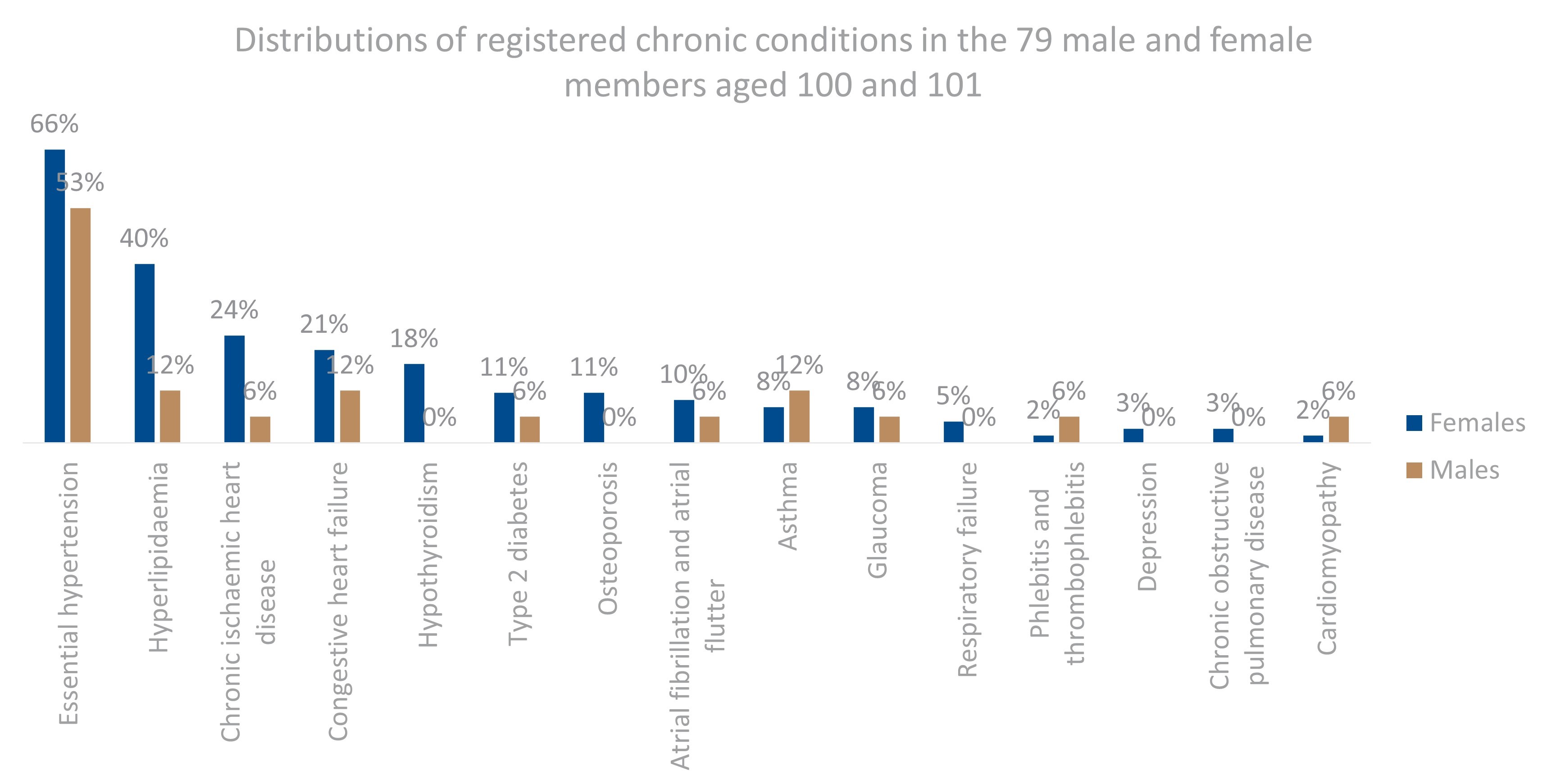
Figure 3. Chronic condition count in 79 DHMS members aged 100 or 101 (May 2024 - May 2025).
How often are they admitted to hospital?
Among the 79 youngest centenarians, 24 were admitted to the hospital from May 2024 to May 2025 (Figure 4):
- Only seven of these admissions were for major surgery (including for pacemaker insertion, skin-related procedures, and hip and wrist surgeries).
- The most common reasons for the remaining, non-surgical, admissions were kidney and urinary tract infections and medical back problems
- 35 admissions among 79 centenarians represents a 44% admission rate. This is comparable to admission rate of members in their 60's (46%) and is 22% lower than for members in their 70s.
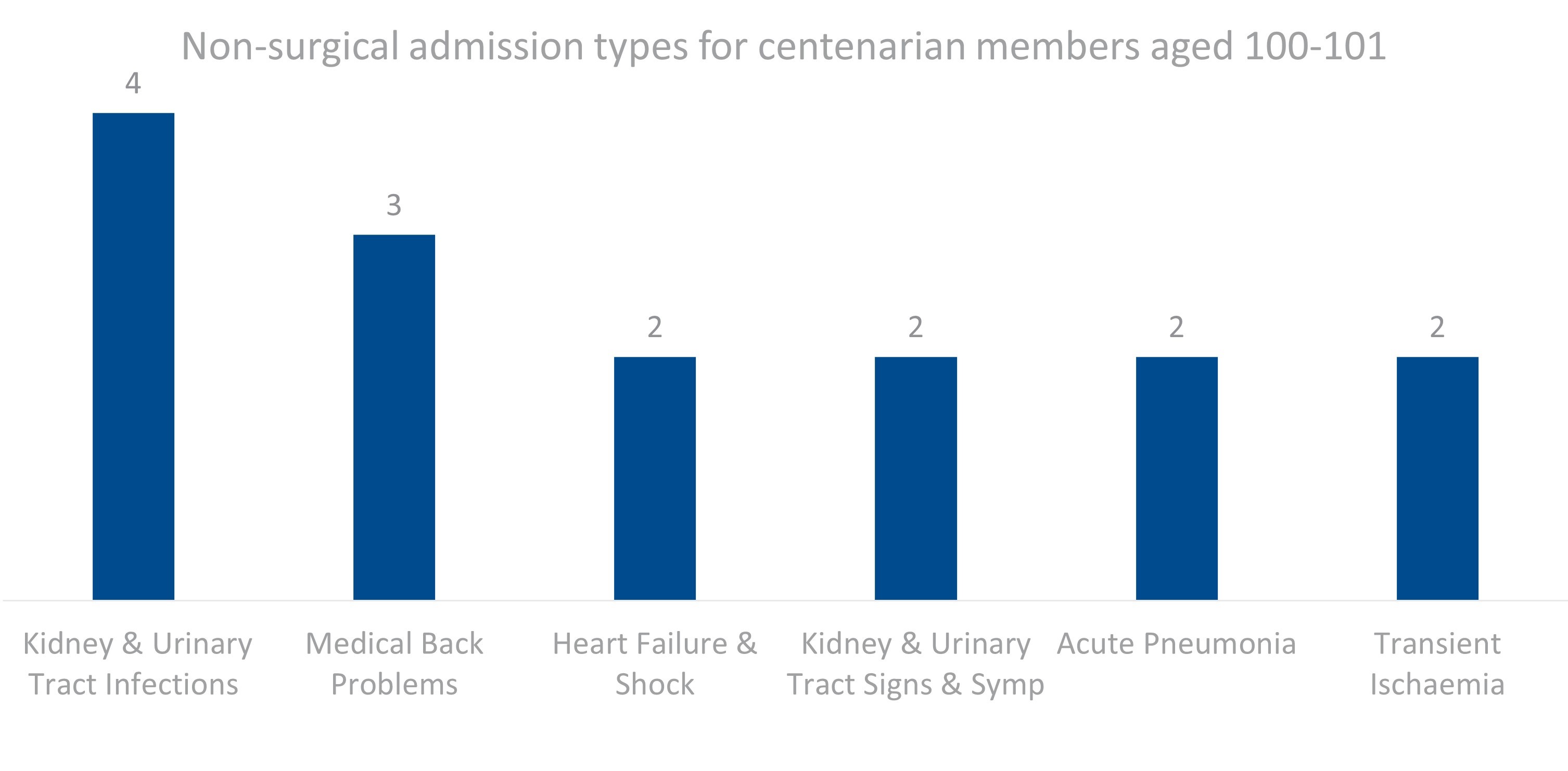
Figure 4. Top non-surgical reasons for admission amongst 24 centenarians - aged 100 or 101 - admitted over the past year (May 2024 - May 2025).
How prevalent are cancers in this group?
Looking at cancer prevalence in this group 12 of these 79 centenarians have survived malignant cancers, the most common cancer being non-melanoma skin cancer (Figure 5). Seven members were diagnosed over 10 years ago (between 2007 and 2015).
Five members were diagnosed in the past five years, between 2020 and 2024. None of these centenarians are currently on active chemotherapy or radiation therapy, indicating that they are most likely in remission.
According to the American Cancer Society, the average lifetime risk of developing cancer is about 39-40%, and the average risk of dying from cancer is between 16% and 17%. In our group, 12 out of 79 centenarians developed cancer and survived.
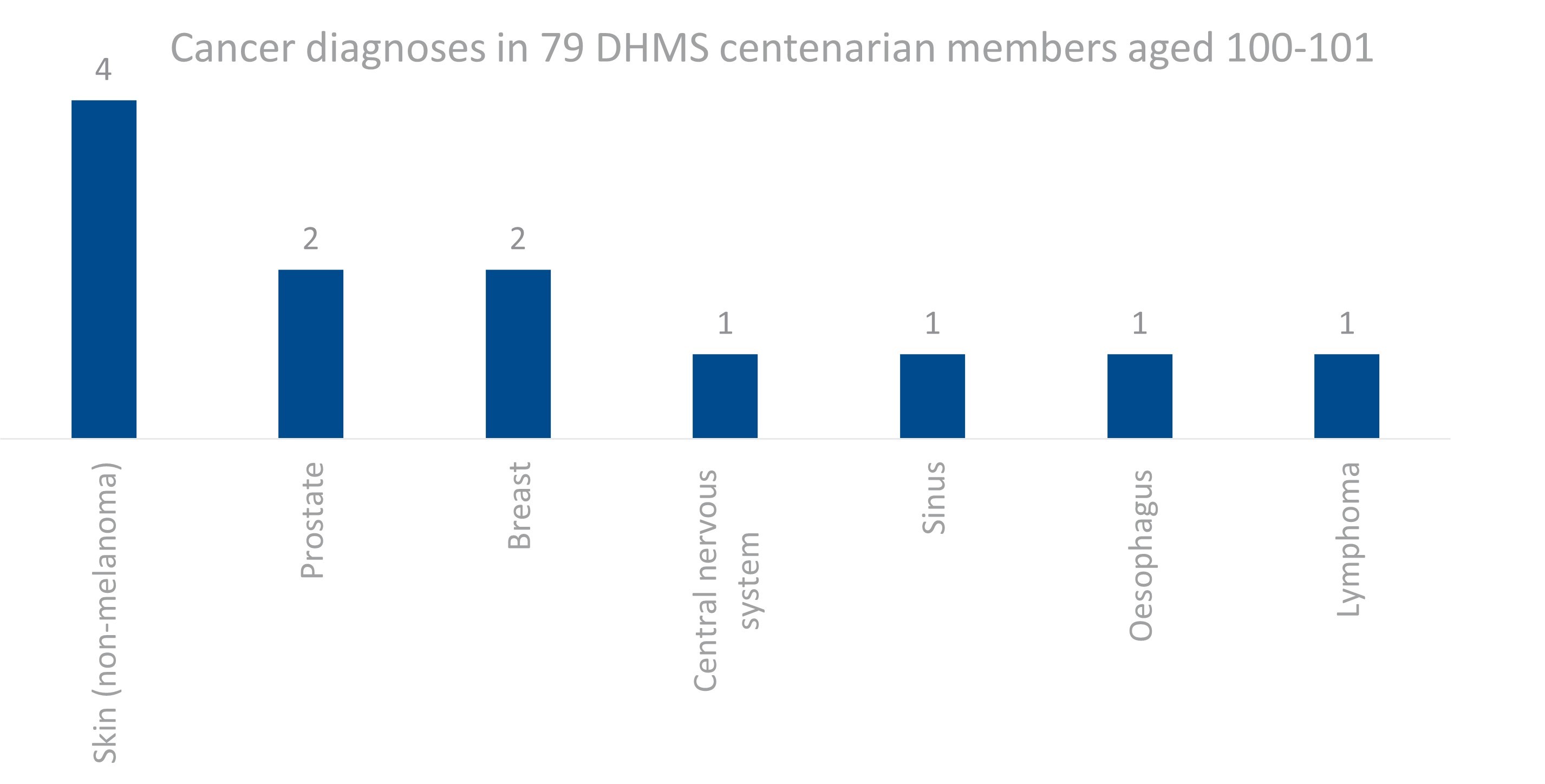
Figure 5. Cancer diagnoses in the 79 DHMS member centenarians aged 100-101 in 2025
How much are our centenarians claiming from the Scheme?
Stepping back and looking at 'cost per life per month' (what a member claims from DHMS every month for both in- and out-of-hospital care), from May 2024 to May 2025 our oldest centenarian Scheme members claim at rates similar to those of members in their 50s, while the 'younger' centenarians claim at rates similar to those who are 60 to 64-year-old members. It is remarkable to see the low rates at which our centenarians claim from the Scheme and even more so to see that our oldest centenarians - those aged 102 to 105 claim less than those who are younger (those aged 100 and 101).
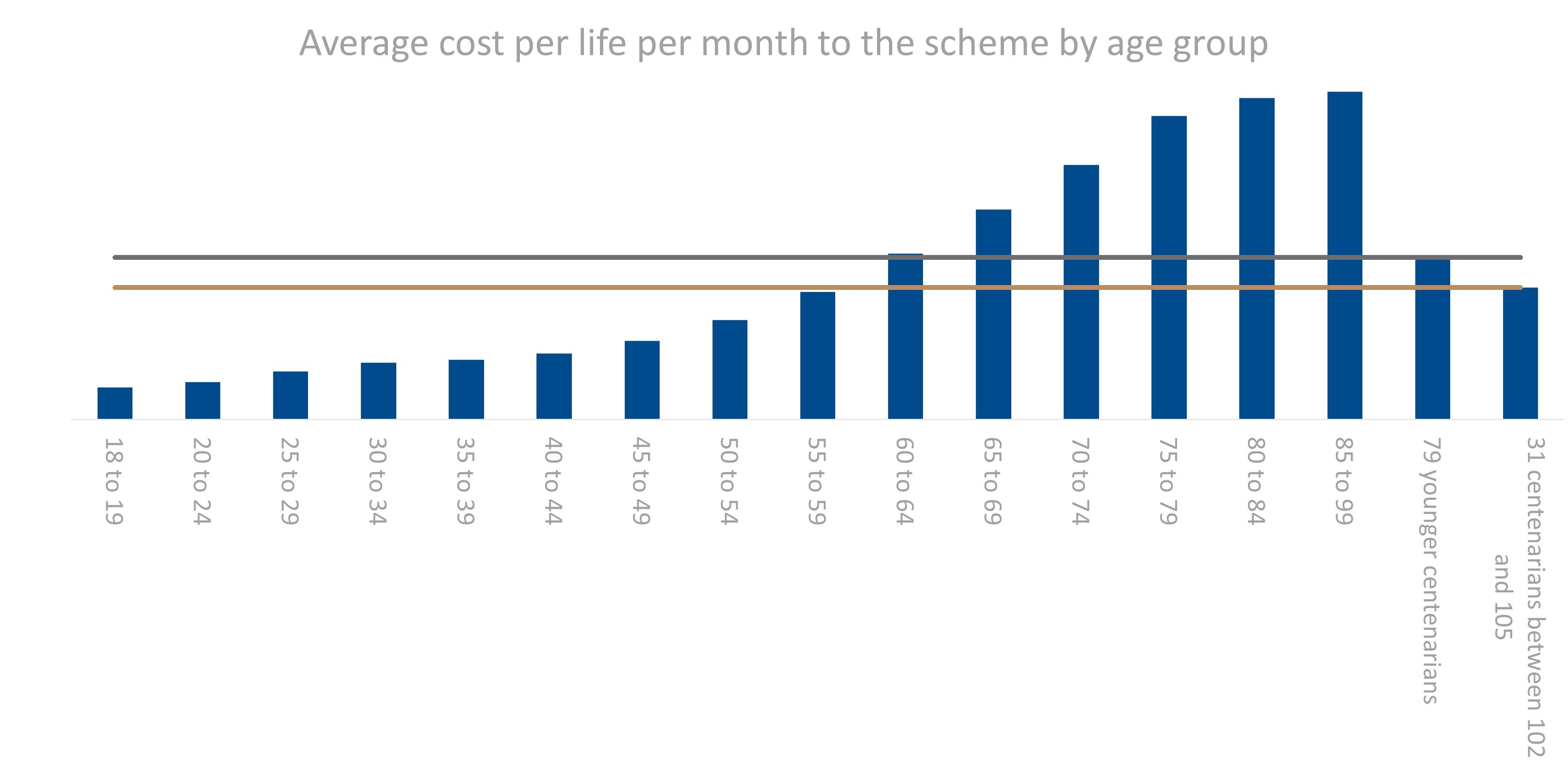
Figure 6. Average cost per life per month to the scheme by age group across the DHMS members base in the past year (May 2024 - May 2025).
Further interesting facts about Discovery Health Medical Scheme's 110 centenarian Scheme members
At 22 May 2025:
- 17 of them were married to DHMS members (four spouses alive)
- Spouses are, on average, six years younger than their centenarian counterparts.
- The highest-age combination in the group, at 200 years combined, stem from a 101-year old centenarian and his 99-year-old spouse.
- On average, our centenarians have been DHMS members for 18.5 years.
- 64 of the 110 centenarians joined DHMS over 20 years ago.
- While members of DHMS, 22 of the centenarians have also been Discovery Vitality members:
- 7 were current Vitality members - five on Blue Vitality status, one on Bronze and one on Gold Vitality status.
- 11 of these centenarians remained on Blue Vitality status throughout.
- 8 reached Bronze Vitality status between the ages of 85 and 96.
- 1 reached Silver Vitality status at the age of 88.
- 1 reached Gold Vitality status at the age of 94.
- 1 reached Diamond Vitality status at the age of 95.
- 89 of the 110 centenarians were vaccinated against COVID-19
- Among our 110 centenarians, 15 had a documented COVID-19 infection
- They contracted the disease between 96 and 101 years old (age group considered high risk for developing very serious COVID-19 illness).
- All 15 members recovered.
- Five members (4.5% of our centenarians) had been admitted to hospital for COVID-19, an admission rate similar to that of much younger Scheme members - those aged 60 to 64.
- 13 of the 15 were vaccinated against COVID-19 (eight members had more than 2 doses).
- Over time, there has been a steady increase in the number of DHMS members who have reached the age of 100 and exceeded 100 (Figure 7)
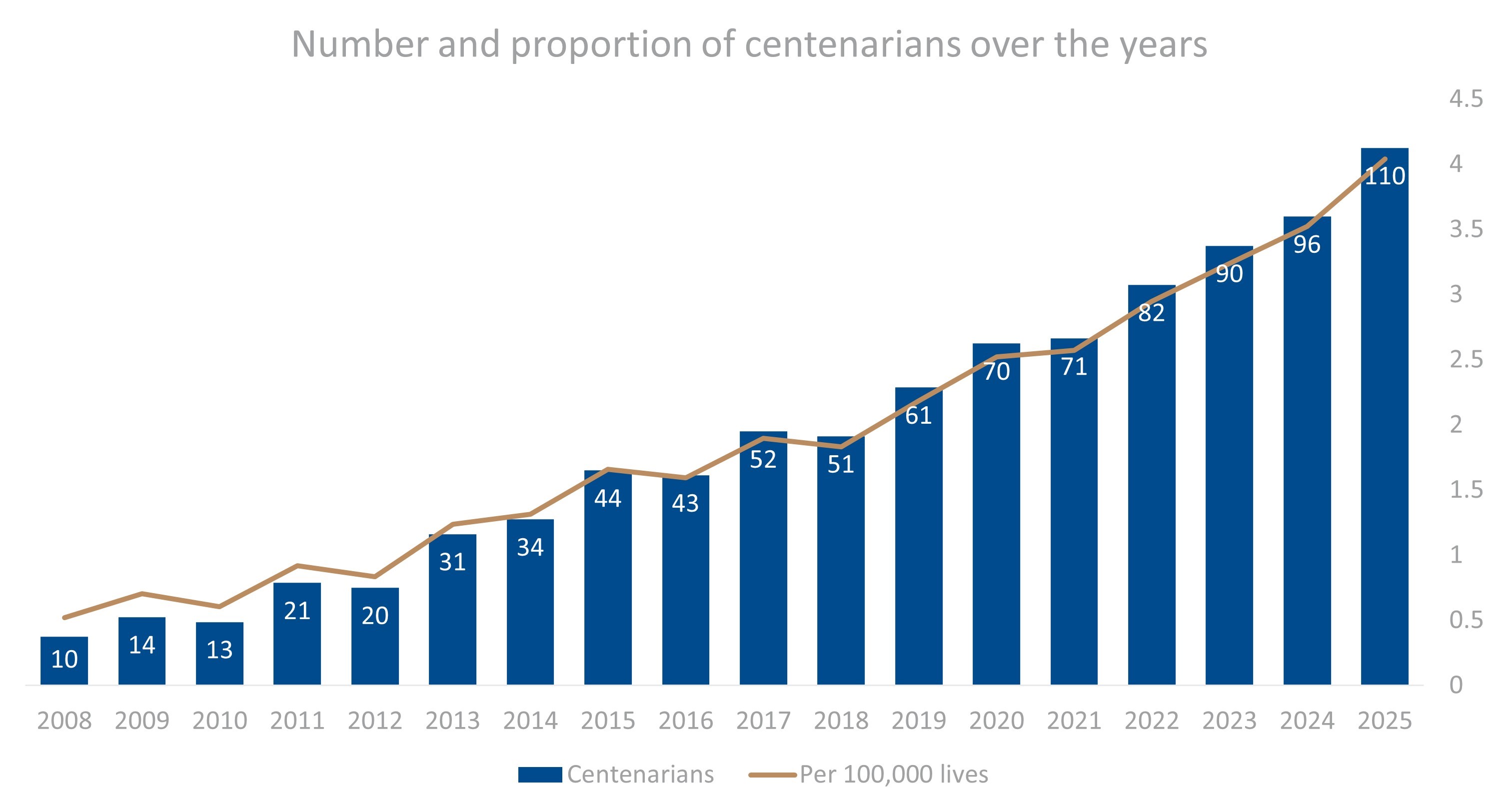
Figure 7: Number and proportion of centenarians between 2008 and 2025
Discovery Health Medical Scheme's future centenarian cohort
As of May 2025, we have 7,954 members over the age of 90 (294 per 100,000 DHMS members) - up from 1,550 (81 people per 100,000) in 2008. This represents a 5.13-fold increase in absolute terms and a 3.54-times higher prevalence.
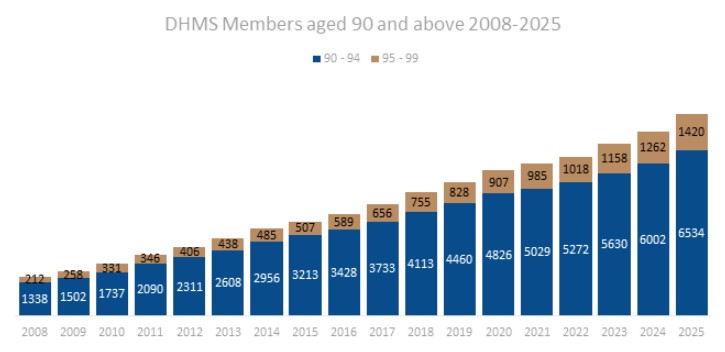
Figure 8: Number of DHMS members 90 years and older between 2008 and 2025
The number of members who are 95 and older has increased even more significantly. As of May 2025, we had 1,420 members 95 and older (52 members per 100,000 DHMS members), compared with only 212 in 2008 (11 members per 100,000 compared). This represents a 6.7-fold increase in absolute terms and 4.8 times higher prevalence.
Conclusion
As of 22 May 2025, DHMS has 110 centenarian members. More than a third (31) of these members were already centenarians in 2023 when we first reported the Scheme's oldest members - and are now aged from 102 to 105 years old.
Overall, the Scheme's 31 'oldest' centenarians (aged 102-105) are as healthy as people decades younger than them, with hospital admission rates, chronic condition counts, and monthly claims to the Scheme proving this trend.
The same applies to the Scheme's 79 'oldest' centenarians (aged 102-105).
Another trend, one that has remained consistent across our 2023 and 2025 updates, is that there are far more centenarian females than males (88 vs 22 in 2025). However, the males in the group are healthier than the females, with fewer registered chronic conditions.
Our centenarians have really defied the odds, surviving past cancers as well and COVID-19 infection.
Eleven of these members have, after the age of 85, achieved statuses higher than the base Blue Vitality status. Seven centenarians were Vitality members in May 2025 - five on Blue Vitality status and, most remarkably, one member has been on Bronze and another on Gold Vitality status in their centenarian years, showing engagement in physical activity and other health-promoting behaviour.
With a steady rise in the number of DHMS members living longer, the percentage of members over the age of 90, 95 and 100 is increasing, driving a future increase in the number of centenarian members of the Discovery Health Medical Scheme.
Interested in knowing more or reporting on these findings?
Please contact us on MEDIA_RELATIONS_TEAM@discovery.co.za to request any updated data available since publication and to obtain any further context required.
Did you find this post interesting?
Please visit our Discovery Health Insights Hub for a range of analyses and insights shared by our Discovery Health Intelligence Team over the past three and a half years and spanning a variety of health-related themes. All of our COVID-related analyses are posted under our "COVID-19 Insights" pillar.
All information shared on this page is based on perspectives gained from analysing data acquired by Discovery Ltd and its various affiliate entities (Discovery). The analysis, which is conducted by Discovery's actuarial and data science team, aims to encourage industry dialogue. Publications containing our analyses are shared for educational and informational purposes only. Each publication reflects only these data available for analysis at the time of publication. It does not, unless otherwise indicated, constitute peer-reviewed, published scientific research, and hence should not be interpreted as such or used as a basis for altering treatment decisions. While every effort has been made to ensure the accuracy of the content conveyed, we cannot be held liable or responsible for any actions or decisions taken based on the information shared in this article.
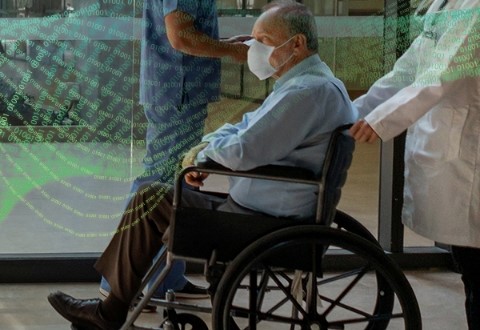
Long COVID symptoms, impact on carrying out daily activities: Survey of just over 7,000 medical scheme members reveals key insights
16 June 2022
Authors: Shirley Collie (Chief Healthcare Analytics Actuary, Discovery Health), Lizelle Steenkamp (Senior Healthcare Statistician, Discovery Health), Lebohang Radebe (Data Scientist, Discovery Health), Dr Smybinn Mathews (Clinician, Discovery Health) and Dr Dave Jacobs (Senior Clinician and Clinical Classification System Architect, Discovery Health)